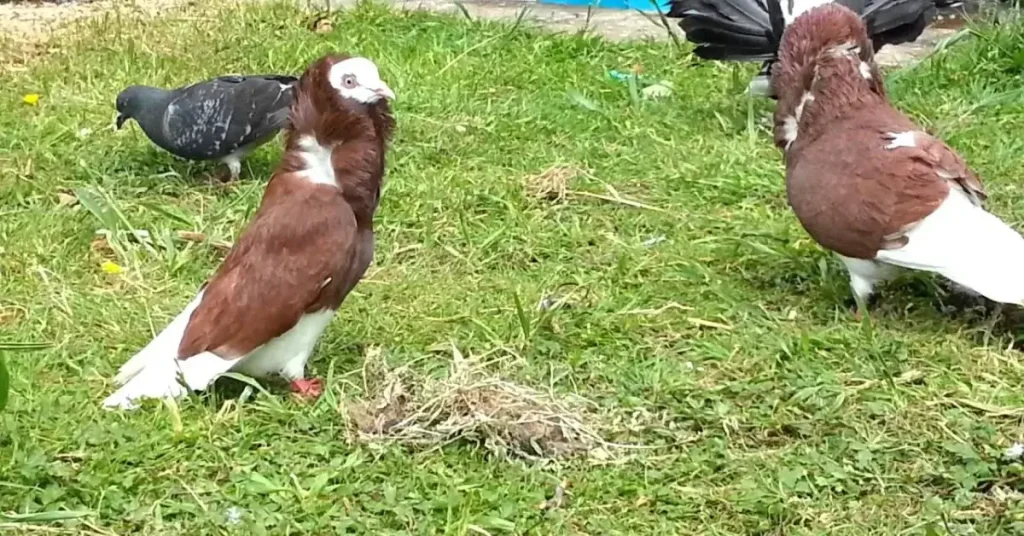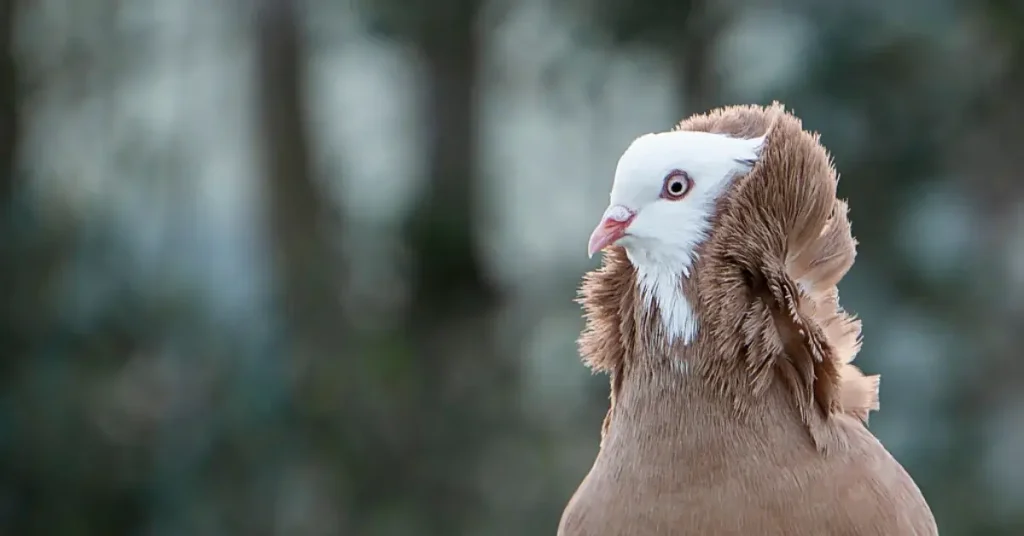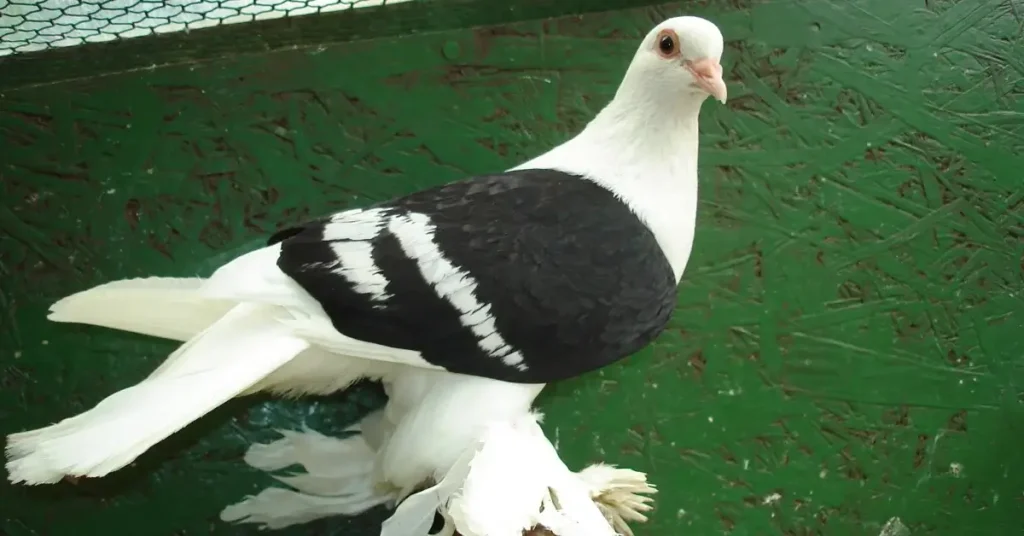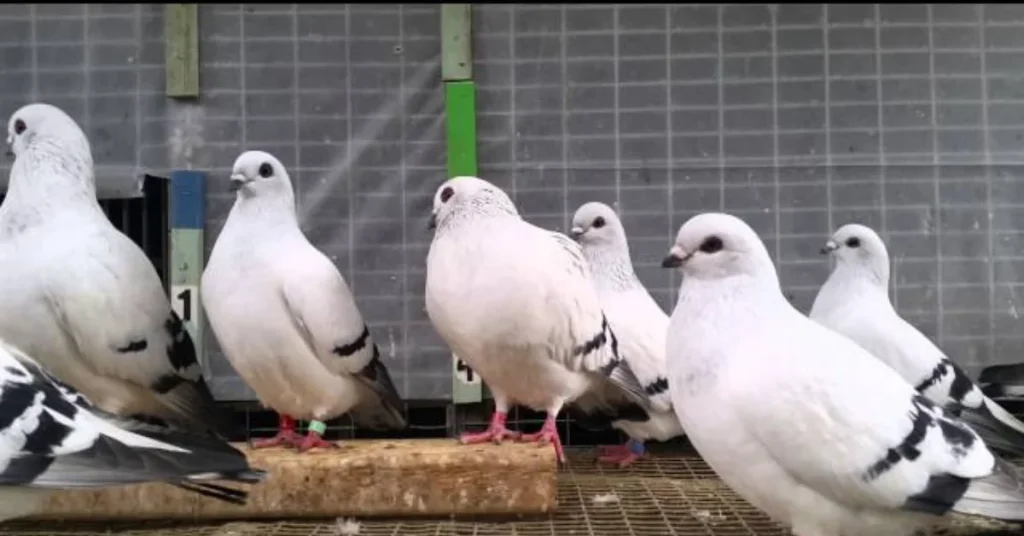🕊️ Old Dutch Capuchine Pigeon – A Regal Beauty with Unique Charm
🌟 Introduction
The Old Dutch Capuchine pigeon is a striking ornamental breed admired for its ruffled feather hood and charming personality. With roots in the Netherlands, this elegant bird has captured the hearts of pigeon fanciers around the world. Its beauty isn’t just feather-deep—this breed is also known for its calm demeanor and gentle nature, making it a favorite among beginners and experienced keepers alike.
📜 History and Origin
The Old Dutch Capuchine has a rich heritage dating back several centuries. It was developed in the Netherlands during the 16th and 17th centuries, originally bred for its unique feather structure and stylish appearance. The breed’s name, “Capuchine,” comes from the hood of feathers around its head, reminiscent of the robes worn by Capuchin monks.
Over generations, selective breeding refined the bird’s signature features, turning the Old Dutch Capuchine into a showstopper in pigeon exhibitions.
🧬 Appearance and Distinctive Features
One look at the Old Dutch Capuchine, and it’s clear why this breed is so beloved. Key characteristics include:
- 🧢 A prominent feather hood or “cap” that forms a circular ruff around the neck and head
- 🌈 A smooth, sleek body with rich feather colors including white, black, red, yellow, and more
- 👀 A gentle expression with bright, alert eyes
- 🕊️ A medium-sized body with a slightly upright posture
This breed is often described as regal and poised, with every feather seemingly in place.
🧠 Temperament and Behavior
The Old Dutch Capuchine isn’t just about looks—it has a delightful personality as well:
- 💖 Calm and friendly disposition
- 🤲 Easily tamed and enjoys human interaction
- 🤝 Peaceful with other birds, making it suitable for aviary settings
- 🎭 Not aggressive or territorial
These birds are great companions for those looking for a low-stress, visually impressive breed that enjoys being around people.
🏠 Ideal Living Conditions
Old Dutch Capuchines do well in both indoor lofts and outdoor aviaries, as long as they are:
- 🌤️ Protected from harsh weather and predators
- 🧼 Kept clean with proper ventilation
- 👫 Housed with compatible, non-aggressive birds
- 🪶 Provided with perches and nesting spaces
They don’t require as much flight space as racing breeds, but they still benefit from room to move and exercise.
🥗 Diet and Nutrition
To stay healthy and vibrant, Old Dutch Capuchines need a balanced diet:
- 🌾 Quality pigeon seed mix as the base
- 🥬 Fresh greens like spinach or kale as supplements
- 🧂 Grit and calcium sources for digestion and egg production
- 💧 Fresh water is available at all times
Good nutrition not only enhances their health but also helps maintain their pristine feather quality.
🧼 Grooming and Maintenance
This breed’s feather hood requires occasional grooming to keep it neat:
- 🪮 Gently clean the hood if soiled or disheveled
- 🧽 Regular loft cleaning prevents feather damage and illness
- 🦠 Monitor for mites and lice, especially around the feathered head area
While low-maintenance overall, a little extra attention helps them look their best.
🧬 Breeding and Reproduction
Old Dutch Capuchines are fertile and attentive parents, making them easy to breed. Some notes for breeding:
- 🪺 Use clean, cozy nesting areas
- 🕊️ Pair birds that are free from health or feather issues
- 👶 Chicks should be monitored to ensure proper growth and hood development
Breeders often keep detailed records to track lineage and improve future generations’ feather quality.
🎯 Suitability for Beginners
Thanks to their manageable nature, the Old Dutch Capuchin is a great breed for novice pigeon keepers:
- ✅ Easy to care for with basic pigeon-keeping knowledge
- 📚 Does not require intense flight training
- 🧘 Calm nature makes them stress-free to handle
They offer the perfect mix of beauty and ease, welcoming new enthusiasts into the world of fancy pigeons.
🎉 Fun Facts About Old Dutch Capuchines
- 🎩 Their feather hood is so unique that it inspired their name based on Capuchin monks.
- 🎭 Often used in pigeon exhibitions due to their striking appearance and grace.
- 📜 One of the oldest recognized fancy pigeon breeds in the world.
❓ Frequently Asked Questions
Q1: Are Old Dutch Capuchines good for apartment living?
A: Yes, they can thrive in apartment settings if provided a clean, safe indoor aviary with adequate light and ventilation.
Q2: Can they fly well?
A: They can fly short distances, but they’re not strong fliers like racing pigeons. Most owners keep them as ornamental or show birds.
Q3: Are they friendly with other pigeon breeds?
A: Absolutely. Their gentle temperament makes them peaceful aviary companions.
Q4: How much space do they need?
A: A moderately sized loft or aviary with perches and nesting areas is sufficient. They appreciate room to stretch and socialize.
Q5: Do they require special grooming?
A: Not extensively, but their feather hood should be kept clean and free from matting or dirt buildup.
✅ Conclusion
The Old Dutch Capuchine pigeon is a true gem among fancy pigeon breeds—graceful, serene, and visually stunning. Whether you’re drawn to their historical elegance or their feathered flair, this breed offers joy to keepers of all experience levels. With proper care, attention, and admiration, these birds flourish and bring beauty to any loft or aviary.
From their soft coos to their proud postures, the Old Dutch Capuchin continues to enchant bird lovers around the world.
Read more about the Rare breed of Jacobin pigeon






